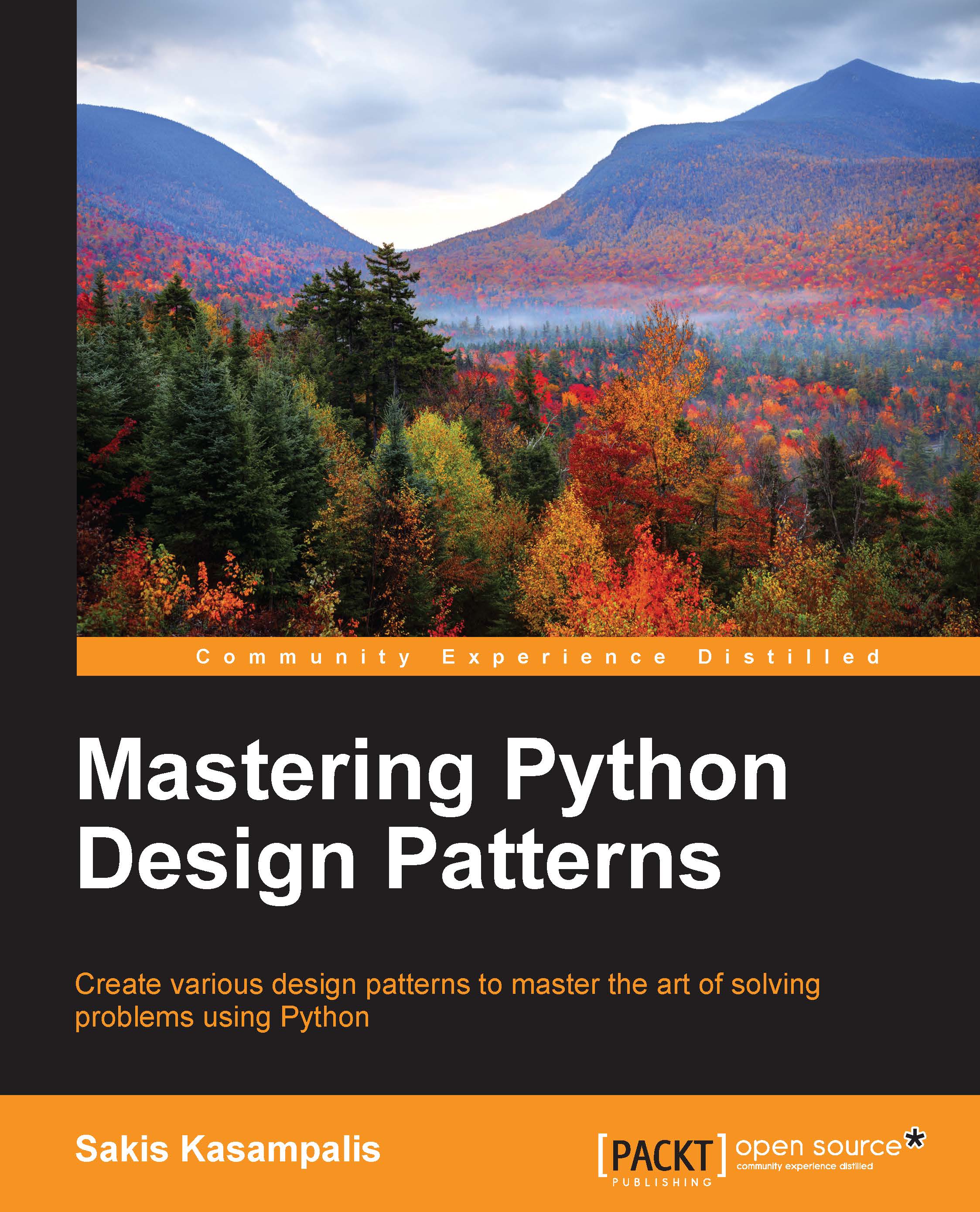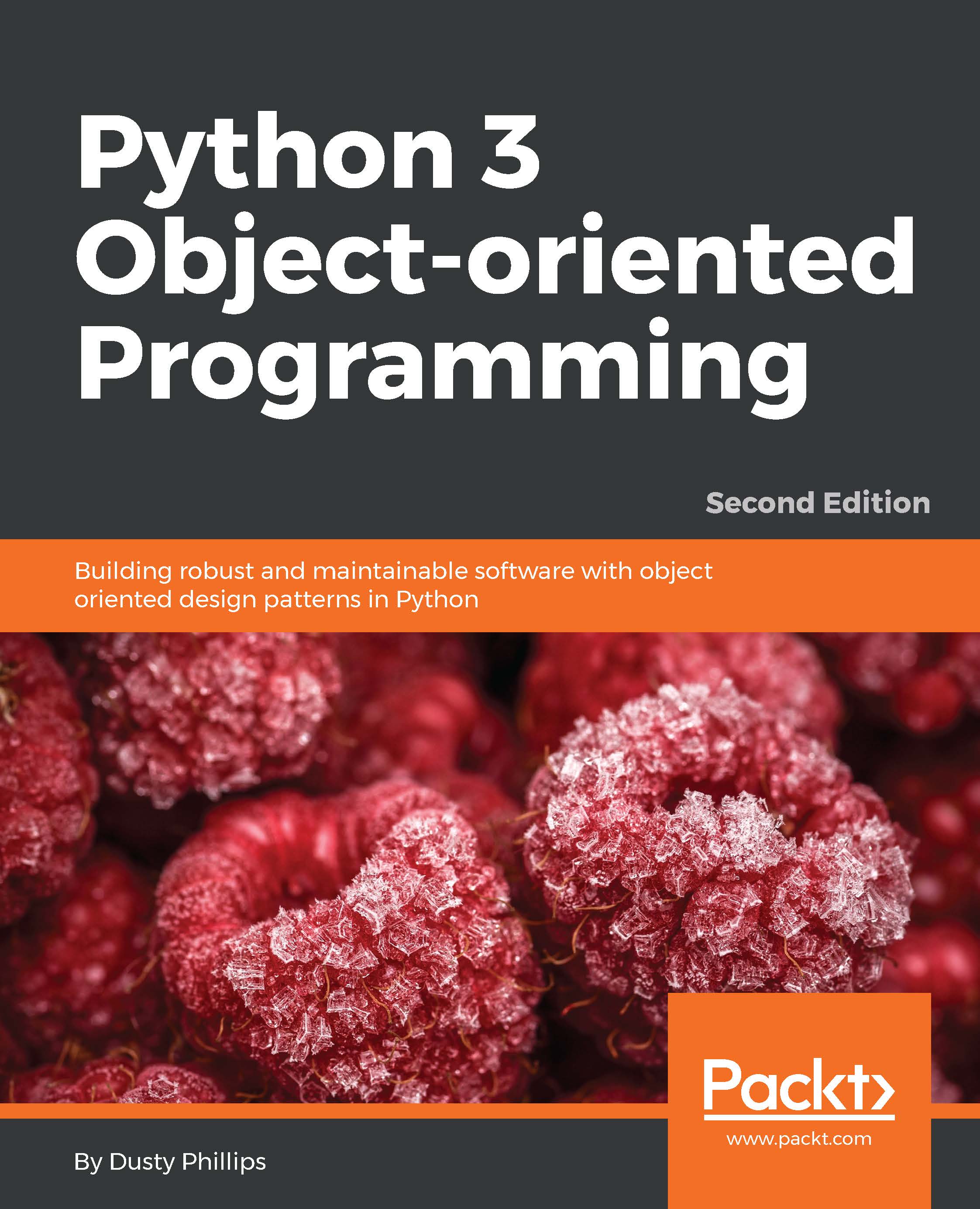Subdividing the procedural paradigm
We can subdivide imperative languages into a number of discrete categories. In this section, we'll glance quickly at the procedural versus object-oriented distinction. What's important here is to see how object-oriented programming is a subset of imperative programming. The distinction between procedural and object-orientation doesn't reflect the kind of fundamental difference that functional programming represents.
We'll use code examples to illustrate the concepts. For some, this will feel like reinventing a wheel. For others, it provides a concrete expression of abstract concepts.
For some kinds of computations, we can ignore Python's object-oriented features and write simple numeric algorithms. For example, we might write something like the following to get the range of numbers:
We've made this program strictly procedural, avoiding any explicit use of Python's object features. The program's state is defined by the values of the variables s and n. The variable, n, takes on values such that 1 ≤ n < 10. As the loop involves an ordered exploration of values of n, we can prove that it will terminate when n == 10. Similar code would work in C or Java using their primitive (non-object) data types.
We can exploit Python's
Object-Oriented Programming (OOP) features and create a similar program:
This program produces the same result but it accumulates a stateful collection object, m, as it proceeds. The state of the computation is defined by the values of the variables m and n.
The syntax of m.append(n) and sum(m) can be confusing. It causes some programmers to insist (wrongly) that Python is somehow not purely Object-oriented because it has a mixture of the function()and object.method() syntax. Rest assured, Python is purely Object-oriented. Some languages, like C++, allow the use of primitive data type such as int, float, and long, which are not objects. Python doesn't have these primitive types. The presence of prefix syntax doesn't change the nature of the language.
To be pedantic, we could fully embrace the object model, the subclass, the list class, and add a sum method:
If we initialize the variable, m, with the SummableList() class instead of the list() method, we can use the m.sum() method instead of the sum(m) method. This kind of change can help to clarify the idea that Python is truly and completely object-oriented. The use of prefix function notation is purely syntactic sugar.
All three of these examples rely on variables to explicitly show the state of the program. They rely on the assignment statements to change the values of the variables and advance the computation toward completion. We can insert the assert statements throughout these examples to demonstrate that the expected state changes are implemented properly.
The point is not that imperative programming is broken in some way. The point is that functional programming leads to a change in viewpoint, which can, in many cases, be very helpful. We'll show a function view of the same algorithm. Functional programming doesn't make this example dramatically shorter or faster.
Using the functional paradigm
In a functional sense, the sum of the multiples of 3 and 5 can be defined in two parts:
- The sum of a sequence of numbers
- A sequence of values that pass a simple test condition, for example, being multiples of three and five
The sum of a sequence has a simple, recursive definition:
We've defined the sum of a sequence in two cases: the
base case states that the sum of a zero length sequence is 0, while the
recursive case states that the sum of a sequence is the first value plus the sum of the rest of the sequence. Since the recursive definition depends on a shorter sequence, we can be sure that it will (eventually) devolve to the base case.
The + operator on the last line of the preceding example and the initial value of 0 in the base case characterize the equation as a sum. If we change the operator to * and the initial value to 1, it would just as easily compute a product. We'll return to this simple idea of generalization in the following chapters.
Similarly, a sequence of values can have a simple, recursive definition, as follows:
In this function, we've compared a given value, v, against the upper bound, n. If v reaches the upper bound, the resulting list must be empty. This is the base case for the given recursion.
There are two more cases defined by the given filter_func() function. If the value of v is passed by the filter_func() function, we'll create a very small list, containing one element, and append the remaining values of the until() function to this list. If the value of v is rejected by the filter_func() function, this value is ignored and the result is simply defined by the remaining values of the until() function.
We can see that the value of v will increase from an initial value until it reaches n, assuring us that we'll reach the base case soon.
Here's how we can use the until() function to generate the multiples of 3 or 5. First, we'll define a handy lambda object to filter values:
(We will use lambdas to emphasize succinct definitions of simple functions. Anything more complex than a one-line expression requires the def statement.)
We can see how this lambda works from the command prompt in the following example:
This function can be used with the until() function to generate a sequence of values, which are multiples of 3 or 5.
The until() function for generating a sequence of values works as follows:
We can use our recursive sum() function to compute the sum of this sequence of values. The various functions, such as sum(), until(), and mult_3_5() are defined as simple recursive functions. The values are computed without restoring to use intermediate variables to store state.
We'll return to the ideas behind this purely functional recursive function definition in several places. It's important to note here that many functional programming language compilers can optimize these kinds of simple recursive functions. Python can't do the same optimizations.
Using a functional hybrid
We'll continue this example with a mostly functional version of the previous example to compute the sum of the multiples of 3 and 5. Our hybrid functional version might look like the following:
We've used
nested generator expressions to iterate through a collection of values and compute the sum of these values. The range(1, 10) method is an iterable and, consequently, a kind of generator expression; it generates a sequence of values  . The more complex expression,
. The more complex expression, n for n in range(1, 10) if n%3==0 or n%5==0, is also an iterable expression. It produces a set of values  . A variable,
. A variable, n, is bound to each value, more as a way of expressing the contents of the set than as an indicator of the state of the computation. The sum() function consumes the iterable expression, creating a final object, 23.
Tip
The bound variable doesn't change once a value is bound to it. The variable, n, in the loop is essentially a shorthand for the values available from the range() function.
The if clause of the expression can be extracted into a separate function, allowing us to easily repurpose this with other rules. We could also use a higher-order function named filter() instead of the if clause of the generator expression. We'll save this for Chapter 5, Higher-order Functions.
As we work with generator expressions, we'll see that the bound variable is at the blurry edge of defining the state of the computation. The variable, n, in this example isn't directly comparable to the variable, n, in the first two imperative examples. The for statement creates a proper variable in the local namespace. The generator expression does not create a variable in the same way as a for statement does:
Because of the way Python uses namespaces, it might be possible to write a function that can observe the n variable in a generator expression. However, we won't. Our objective is to exploit the functional features of Python, not to detect how those features have an object-oriented implementation under the hood.
Looking at object creation
In some cases, it might help to look at intermediate objects as a history of the computation. What's important is that the history of a computation is not fixed. When functions are commutative or associative, then changes to the order of evaluation might lead to different objects being created. This might have performance improvements with no changes to the correctness of the results.
Consider this expression:
We are looking at a variety of potential computation histories with the same result. Because the + operator is commutative and associative, there are a large number of candidate histories that lead to the same result.
Of the candidate sequences, there are two important alternatives, which are as follows:
In the first case, we fold in values working from left to right. This is the way Python works implicitly. Intermediate objects 3 and 6 are created as part of this evaluation.
In the second case, we fold from right-to-left. In this case, intermediate objects 7 and 9 are created. In the case of simple integer arithmetic, the two results have identical performance; there's no optimization benefit.
When we work with something like the list append, we might see some optimization improvements when we change the association rules.
Here's a simple example:
In this case, there's some benefit in working from left to right.
What's important for functional design is the idea that the + operator (or add() function) can be used in any order to produce the same results. The + operator has no hidden side effects that restrict the way this operator can be used.
When we use Python for functional programming, we embark down a path that will involve a hybrid that's not strictly functional. Python is not
Haskell, OCaml, or Erlang. For that matter, our underlying processor hardware is not functional; it's not even strictly object-oriented—CPUs are generally procedural.
| | All programming languages rest on abstractions, libraries, frameworks and virtual machines. These abstractions, in turn, may rely on other abstractions, libraries, frameworks and virtual machines. The most apt metaphor is this: the world is carried on the back of a giant turtle. The turtle stands on the back of another giant turtle. And that turtle, in turn, is standing on the back of yet another turtle. It's turtles all the way down. | |
| | --Anonymous
|
There's no practical end to the layers of abstractions.
More importantly, the presence of abstractions and virtual machines doesn't materially change our approach to designing software to exploit the functional programming features of Python.
Even within the functional programming community, there are more pure and less pure functional programming languages. Some languages make extensive use of monads to handle stateful things like filesystem input and output. Other languages rely on a hybridized environment that's similar to the way we use Python. We write software that's generally functional with carefully chosen procedural exceptions.
Our functional Python programs will rely on the following three stacks of abstractions:
- Our applications will be functions—all the way down—until we hit the objects
- The underlying Python runtime environment that supports our functional programming is objects—all the way down—until we hit the turtles
- The libraries that support Python are a turtle on which Python stands
The operating system and hardware form their own stack of turtles. These details aren't relevant to the problems we're going to solve.
 United States
United States
 Great Britain
Great Britain
 India
India
 Germany
Germany
 France
France
 Canada
Canada
 Russia
Russia
 Spain
Spain
 Brazil
Brazil
 Australia
Australia
 Singapore
Singapore
 Canary Islands
Canary Islands
 Hungary
Hungary
 Ukraine
Ukraine
 Luxembourg
Luxembourg
 Estonia
Estonia
 Lithuania
Lithuania
 South Korea
South Korea
 Turkey
Turkey
 Switzerland
Switzerland
 Colombia
Colombia
 Taiwan
Taiwan
 Chile
Chile
 Norway
Norway
 Ecuador
Ecuador
 Indonesia
Indonesia
 New Zealand
New Zealand
 Cyprus
Cyprus
 Denmark
Denmark
 Finland
Finland
 Poland
Poland
 Malta
Malta
 Czechia
Czechia
 Austria
Austria
 Sweden
Sweden
 Italy
Italy
 Egypt
Egypt
 Belgium
Belgium
 Portugal
Portugal
 Slovenia
Slovenia
 Ireland
Ireland
 Romania
Romania
 Greece
Greece
 Argentina
Argentina
 Netherlands
Netherlands
 Bulgaria
Bulgaria
 Latvia
Latvia
 South Africa
South Africa
 Malaysia
Malaysia
 Japan
Japan
 Slovakia
Slovakia
 Philippines
Philippines
 Mexico
Mexico
 Thailand
Thailand
















